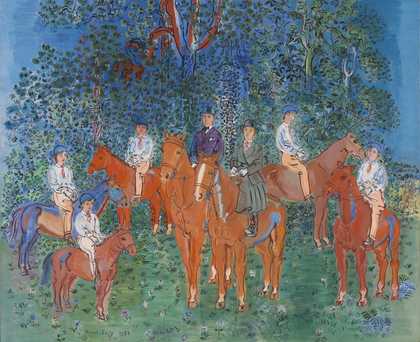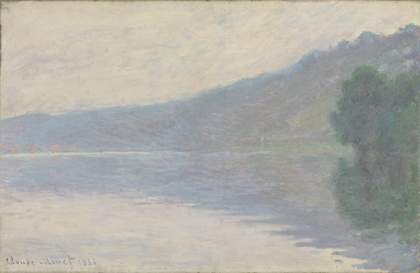To emphasize the independence of form and colour, Raoul Dufy does not confine the second within the limits of the first, but superimposes one on the other.
In exactly the same way Dufy endlessly resurrects subjects which he has already used, although every picture is nevertheless new and perfectly achieved. They are not different versions of the same subject but another harmony, another combination of rhythms, of which the subject is only the starting point.
It may be thought that Claude Monet has already made use of this formula of a single landscape seen under different aspects, but Dufy’s aim is quite different. Monet’s haystacks, his Rouen cathedrals, are conditioned by the weather or the time of day, depending on the clarity of the atmosphere or the season of the year; that is to say, the artist submits willingly to ideas dictated by circumstances of light or temperature, things outside himself, whereas Dufy imposes on a picture his individual and personal vision.
In this exhibition we have concentrated on this very special aspect, characteristic of Raoul Dufy’s talent. We have decided to place emphasis on those fundamental themes to which he returned so often during his career, themes such as women, horses, fields, and boats. In this way we hope to show how deeply felt and considered is that endless invention of Dufy’s which is thought to be accidental because the author’s distinction was never to let the working of his mind appear, and because he only allowed the public to see what had been pruned of all suggestion of effort.
Although it might not be suspected at first sight, Dufy’s lightness of touch and fluency was paid for in lifelong patience and unremitting hard work.
Raymond Cogniat


